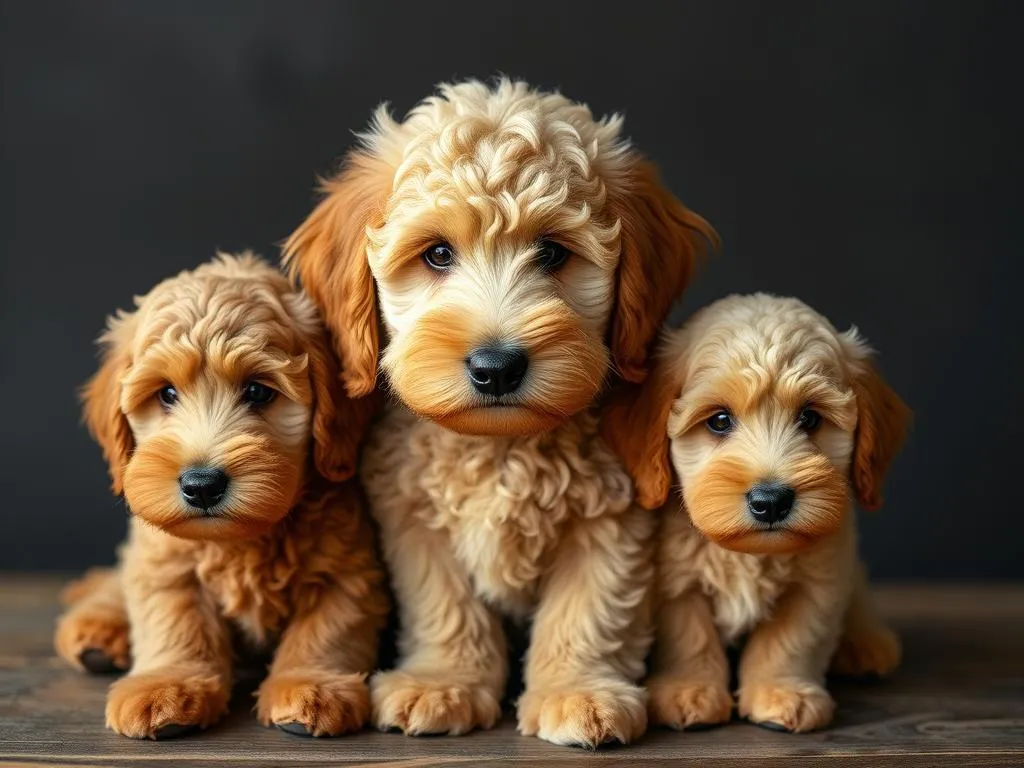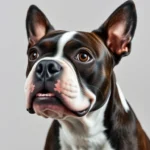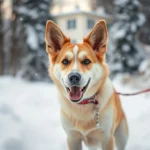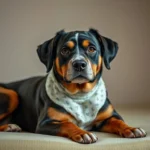
Introduction
Goldendoodles have surged in popularity over the last couple of decades, charming dog lovers with their friendly disposition, intelligence, and versatility. As a delightful hybrid breed, Goldendoodles are the result of crossing a Golden Retriever with a Poodle. With their adorable looks and loving nature, they make excellent family pets. However, one crucial aspect that potential owners must consider is the different Goldendoodle coat types. Understanding these coat types can significantly affect your grooming needs, allergy considerations, and even your dog’s overall health. This article aims to explore the various Goldendoodle coat types and their characteristics, helping you make an informed decision when selecting your furry companion.
Understanding Goldendoodles
What is a Goldendoodle?
A Goldendoodle is a hybrid breed that combines the best traits of its parent breeds: the intelligent and hypoallergenic Poodle and the friendly and loyal Golden Retriever. The breed emerged in the late 20th century, primarily to create a service dog that is more suitable for allergy sufferers. Goldendoodles can vary in size depending on whether their Poodle parent is a standard, miniature, or toy Poodle.
Why Choose a Goldendoodle?
Goldendoodles are known for their friendly temperament and adaptability, making them a perfect fit for families, singles, and seniors alike. These dogs are social creatures that thrive on interaction, making them excellent companions. Furthermore, one of the most appealing aspects of Goldendoodles is their hypoallergenic qualities related to their coat types. While no dog is completely hypoallergenic, Goldendoodles tend to shed less than many other breeds, which can be a significant advantage for allergy sufferers. Their gentle nature and intelligence also make them easy to train, enhancing their appeal as family-friendly dogs.
Goldendoodle Coat Types Overview
The Three Main Coat Types
Goldendoodles typically come in three primary coat types: Curly, Wavy, and Straight. Each coat type has distinct characteristics and benefits that cater to different lifestyles and grooming preferences.
Curly Coat
The curly coat of a Goldendoodle is characterized by tight, springy curls that resemble those of a Poodle. This coat type is often considered the most hypoallergenic due to its low shedding nature. Curly coats tend to trap dander and hair, preventing it from becoming airborne, which can be beneficial for those with allergies.
Benefits of a curly coat:
– Low shedding: Ideal for allergy sufferers.
– Hypoallergenic: Reduces allergens in the home.
– Unique appearance: Provides a distinctive and adorable look.
Wavy Coat
The wavy coat is a happy medium between the curly and straight coats. It features soft waves that give the dog a fluffy appearance without the tight curls. This coat type is also relatively low-shedding, though some owners may notice more hair around the house compared to curly-coated Goldendoodles.
Benefits of a wavy coat:
– Moderate shedding: Easier to manage for some owners.
– Easy maintenance: Requires less grooming than curly coats.
– Versatile appearance: Offers a classic look while still being stylish.
Straight Coat
The straight coat is the least common among Goldendoodles but can still be found. This coat type is characterized by a smooth, straight texture and resembles the coat of a Golden Retriever. While straight coats may shed more than the other types, they are generally easier to groom and maintain.
Benefits of a straight coat:
– Easier grooming: Less prone to mats and tangles.
– Less maintenance: Straight hair requires less frequent grooming.
– Classic look: Appeals to those who prefer a more traditional dog appearance.
Factors Influencing Coat Types
The coat types of Goldendoodles are influenced by genetic factors and the breeding practices of their parent breeds. The genetic inheritance of coat types can vary significantly based on whether the Goldendoodle is an F1 (first generation), F1B (backcross), or multigenerational breed.
- F1 Goldendoodles: These dogs are a direct cross between a Poodle and a Golden Retriever, resulting in a mix of all three coat types.
- F1B Goldendoodles: These dogs are a cross between an F1 Goldendoodle and a Poodle. They often have a higher chance of a curly coat.
- Multigenerational Goldendoodles: These are bred from two Goldendoodles and can exhibit a mix of coat types, often leading to a more predictable coat type.
Understanding these genetic factors can help potential owners predict which Goldendoodle coat types they might encounter in their search for the perfect furry friend.
Grooming and Maintenance of Goldendoodle Coats
Grooming Needs by Coat Type
Grooming is an essential aspect of Goldendoodle ownership, and the specific coat type will influence the grooming routine.
Curly Coat Grooming
Curly-coated Goldendoodles require regular grooming to prevent mats and tangles. It is recommended to brush their coat at least 2-3 times a week using a slicker brush or a comb designed for curly hair. Regular grooming not only keeps their coat looking good but also helps distribute natural oils and prevents skin issues.
Wavy Coat Grooming
Wavy-coated Goldendoodles are relatively low maintenance but still require regular grooming. Brushing once a week is typically sufficient to prevent tangles. A bristle brush or a pin brush works well for this coat type. Regular baths every 6-8 weeks will help maintain their coat’s cleanliness and softness.
Straight Coat Grooming
Straight-coated Goldendoodles require the least grooming among the three coat types. A weekly brushing is usually enough to keep their coat healthy and free of mats. A simple bristle brush will suffice for this grooming routine. Bathing every 8-12 weeks is often adequate for this coat type.
Professional Grooming vs. DIY
Deciding between professional grooming and DIY grooming depends on your comfort level, budget, and the specific needs of your Goldendoodle.
Pros of hiring a professional groomer:
– Expertise in handling different coat types.
– Access to specialized grooming tools.
– Saves time and effort for busy owners.
Cons:
– Can be costly over time.
– May require travel to a groomer.
If you prefer DIY grooming, consider these tips:
– Invest in quality grooming tools like brushes, clippers, and shampoos.
– Follow a regular grooming schedule to keep your dog’s coat healthy.
– Watch online tutorials to learn proper grooming techniques tailored to your Goldendoodle’s coat type.
Health Considerations Related to Coat Types
Common Health Issues in Goldendoodles
While Goldendoodles are generally healthy, certain health issues may be linked to their coat types. For instance, curly-coated Goldendoodles may be more prone to skin conditions like dermatitis due to improper grooming or infrequent bathing. Regular grooming helps to minimize the risk of skin problems by removing dirt and dander.
Preventive Care
Regular grooming is essential not only for aesthetic purposes but also for maintaining your Goldendoodle’s overall health. Signs to watch for that may indicate health issues include:
– Excessive scratching or biting at the skin.
– Unusual odors, which may indicate skin infections.
– Changes in coat texture or appearance.
By keeping a close eye on your dog’s coat and grooming regularly, you can catch potential health issues early and consult a veterinarian if needed.
Choosing the Right Goldendoodle for You
Assessing Lifestyle and Coat Type Compatibility
When choosing a Goldendoodle, it’s essential to assess how different Goldendoodle coat types may fit into your lifestyle.
- Curly coats may be ideal for individuals with allergies or those who prefer lower shedding.
- Wavy coats are versatile and might suit families who want a balance of grooming needs and aesthetic appeal.
- Straight coats could be a good match for those who prefer minimal grooming and ease of maintenance.
Meeting Your Goldendoodle
Before bringing a Goldendoodle home, it’s crucial to meet the puppy and observe its coat type. Ask breeders about the puppy’s parent coats, as this can provide insight into what you might expect as your dog matures. Inquire about the breeder’s practices regarding health testing and coat type guarantees to ensure you’re making a well-informed decision.
Conclusion
Understanding Goldendoodle coat types is vital for potential owners looking to bring one of these charming dogs into their lives. Each coat type comes with its unique characteristics, grooming needs, and health considerations. By assessing your lifestyle and preferences, you can select the right Goldendoodle that fits seamlessly into your family. Remember to research and connect with reputable breeders to ensure you find a healthy and happy puppy.
With the right knowledge and preparation, you can enjoy the companionship of a Goldendoodle that brings joy to your life for years to come.









